Daniel Bolya
Perception Encoder: The best visual embeddings are not at the output of the network
Apr 17, 2025

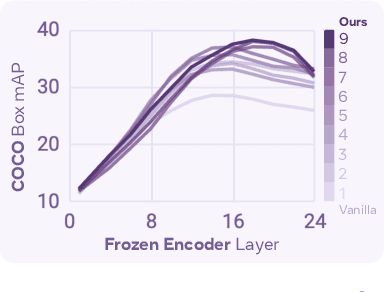
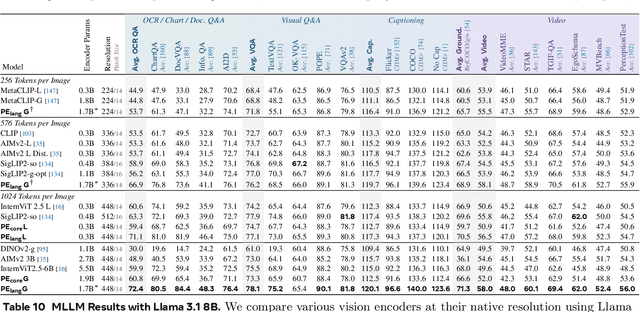
Abstract:We introduce Perception Encoder (PE), a state-of-the-art encoder for image and video understanding trained via simple vision-language learning. Traditionally, vision encoders have relied on a variety of pretraining objectives, each tailored to specific downstream tasks such as classification, captioning, or localization. Surprisingly, after scaling our carefully tuned image pretraining recipe and refining with our robust video data engine, we find that contrastive vision-language training alone can produce strong, general embeddings for all of these downstream tasks. There is only one caveat: these embeddings are hidden within the intermediate layers of the network. To draw them out, we introduce two alignment methods, language alignment for multimodal language modeling, and spatial alignment for dense prediction. Together with the core contrastive checkpoint, our PE family of models achieves state-of-the-art performance on a wide variety of tasks, including zero-shot image and video classification and retrieval; document, image, and video Q&A; and spatial tasks such as detection, depth estimation, and tracking. To foster further research, we are releasing our models, code, and a novel dataset of synthetically and human-annotated videos.
PerceptionLM: Open-Access Data and Models for Detailed Visual Understanding
Apr 17, 2025



Abstract:Vision-language models are integral to computer vision research, yet many high-performing models remain closed-source, obscuring their data, design and training recipe. The research community has responded by using distillation from black-box models to label training data, achieving strong benchmark results, at the cost of measurable scientific progress. However, without knowing the details of the teacher model and its data sources, scientific progress remains difficult to measure. In this paper, we study building a Perception Language Model (PLM) in a fully open and reproducible framework for transparent research in image and video understanding. We analyze standard training pipelines without distillation from proprietary models and explore large-scale synthetic data to identify critical data gaps, particularly in detailed video understanding. To bridge these gaps, we release 2.8M human-labeled instances of fine-grained video question-answer pairs and spatio-temporally grounded video captions. Additionally, we introduce PLM-VideoBench, a suite for evaluating challenging video understanding tasks focusing on the ability to reason about "what", "where", "when", and "how" of a video. We make our work fully reproducible by providing data, training recipes, code & models.
Gaze-LLE: Gaze Target Estimation via Large-Scale Learned Encoders
Dec 12, 2024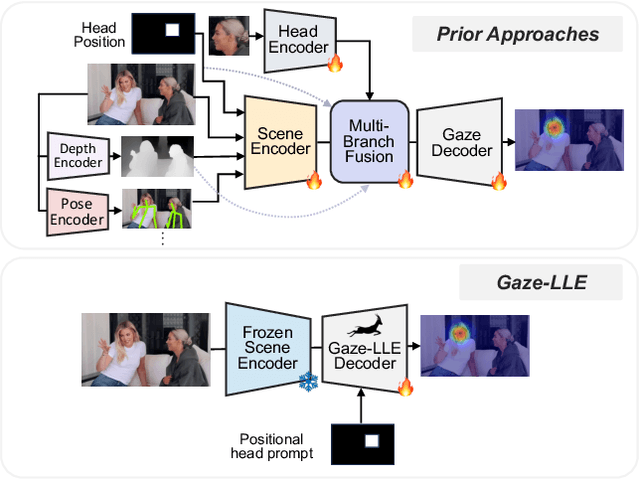
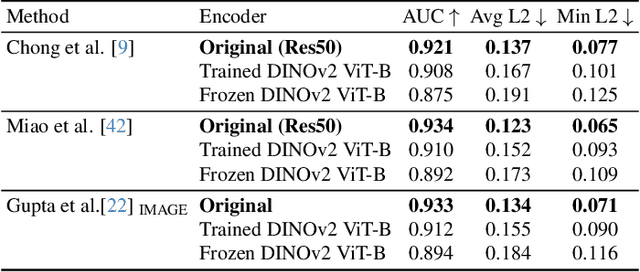

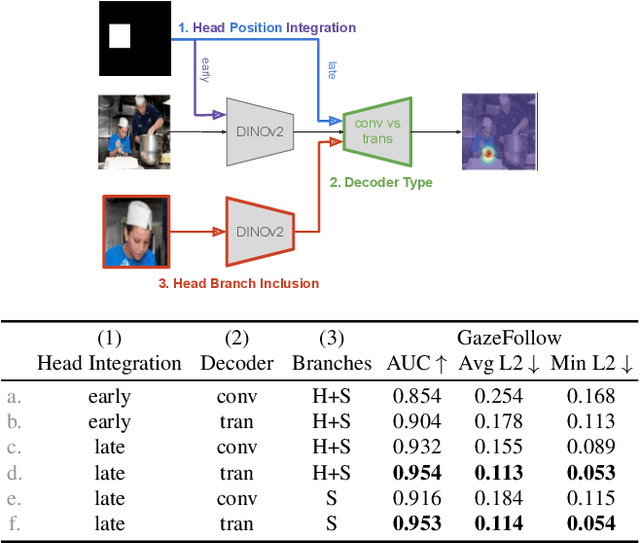
Abstract:We address the problem of gaze target estimation, which aims to predict where a person is looking in a scene. Predicting a person's gaze target requires reasoning both about the person's appearance and the contents of the scene. Prior works have developed increasingly complex, hand-crafted pipelines for gaze target estimation that carefully fuse features from separate scene encoders, head encoders, and auxiliary models for signals like depth and pose. Motivated by the success of general-purpose feature extractors on a variety of visual tasks, we propose Gaze-LLE, a novel transformer framework that streamlines gaze target estimation by leveraging features from a frozen DINOv2 encoder. We extract a single feature representation for the scene, and apply a person-specific positional prompt to decode gaze with a lightweight module. We demonstrate state-of-the-art performance across several gaze benchmarks and provide extensive analysis to validate our design choices. Our code is available at: http://github.com/fkryan/gazelle .
Window Attention is Bugged: How not to Interpolate Position Embeddings
Nov 09, 2023



Abstract:Window attention, position embeddings, and high resolution finetuning are core concepts in the modern transformer era of computer vision. However, we find that naively combining these near ubiquitous components can have a detrimental effect on performance. The issue is simple: interpolating position embeddings while using window attention is wrong. We study two state-of-the-art methods that have these three components, namely Hiera and ViTDet, and find that both do indeed suffer from this bug. To fix it, we introduce a simple absolute window position embedding strategy, which solves the bug outright in Hiera and allows us to increase both speed and performance of the model in ViTDet. We finally combine the two to obtain HieraDet, which achieves 61.7 box mAP on COCO, making it state-of-the-art for models that only use ImageNet-1k pretraining. This all stems from what is essentially a 3 line bug fix, which we name "absolute win".
Hiera: A Hierarchical Vision Transformer without the Bells-and-Whistles
Jun 01, 2023



Abstract:Modern hierarchical vision transformers have added several vision-specific components in the pursuit of supervised classification performance. While these components lead to effective accuracies and attractive FLOP counts, the added complexity actually makes these transformers slower than their vanilla ViT counterparts. In this paper, we argue that this additional bulk is unnecessary. By pretraining with a strong visual pretext task (MAE), we can strip out all the bells-and-whistles from a state-of-the-art multi-stage vision transformer without losing accuracy. In the process, we create Hiera, an extremely simple hierarchical vision transformer that is more accurate than previous models while being significantly faster both at inference and during training. We evaluate Hiera on a variety of tasks for image and video recognition. Our code and models are available at https://github.com/facebookresearch/hiera.
ZipIt! Merging Models from Different Tasks without Training
May 04, 2023Abstract:Typical deep visual recognition models are capable of performing the one task they were trained on. In this paper, we tackle the extremely difficult problem of combining completely distinct models with different initializations, each solving a separate task, into one multi-task model without any additional training. Prior work in model merging permutes one model to the space of the other then adds them together. While this works for models trained on the same task, we find that this fails to account for the differences in models trained on disjoint tasks. Thus, we introduce "ZipIt!", a general method for merging two arbitrary models of the same architecture that incorporates two simple strategies. First, in order to account for features that aren't shared between models, we expand the model merging problem to additionally allow for merging features within each model by defining a general "zip" operation. Second, we add support for partially zipping the models up until a specified layer, naturally creating a multi-head model. We find that these two changes combined account for a staggering 20-60% improvement over prior work, making the merging of models trained on disjoint tasks feasible.
Token Merging for Fast Stable Diffusion
Mar 30, 2023Abstract:The landscape of image generation has been forever changed by open vocabulary diffusion models. However, at their core these models use transformers, which makes generation slow. Better implementations to increase the throughput of these transformers have emerged, but they still evaluate the entire model. In this paper, we instead speed up diffusion models by exploiting natural redundancy in generated images by merging redundant tokens. After making some diffusion-specific improvements to Token Merging (ToMe), our ToMe for Stable Diffusion can reduce the number of tokens in an existing Stable Diffusion model by up to 60% while still producing high quality images without any extra training. In the process, we speed up image generation by up to 2x and reduce memory consumption by up to 5.6x. Furthermore, this speed-up stacks with efficient implementations such as xFormers, minimally impacting quality while being up to 5.4x faster for large images. Code is available at https://github.com/dbolya/tomesd.
Token Merging: Your ViT But Faster
Oct 17, 2022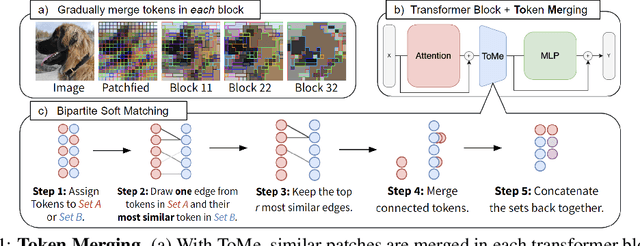
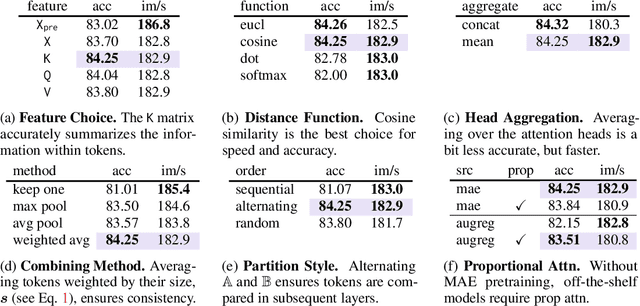
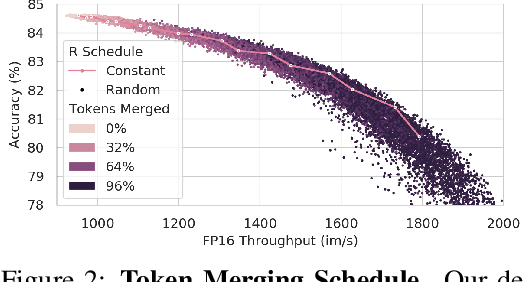
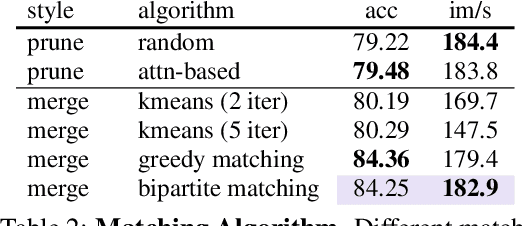
Abstract:We introduce Token Merging (ToMe), a simple method to increase the throughput of existing ViT models without needing to train. ToMe gradually combines similar tokens in a transformer using a general and light-weight matching algorithm that is as fast as pruning while being more accurate. Off-the-shelf, ToMe can 2x the throughput of state-of-the-art ViT-L @ 512 and ViT-H @ 518 models on images and 2.2x the throughput of ViT-L on video with only a 0.2-0.3% accuracy drop in each case. ToMe can also easily be applied during training, improving in practice training speed up to 2x for MAE fine-tuning on video. Training with ToMe further minimizes accuracy drop, leading to 2x the throughput of ViT-B on audio for only a 0.4% mAP drop. Qualitatively, we find that ToMe merges object parts into one token, even over multiple frames of video. Overall, ToMe's accuracy and speed are competitive with state-of-the-art on images, video, and audio.
Hydra Attention: Efficient Attention with Many Heads
Sep 15, 2022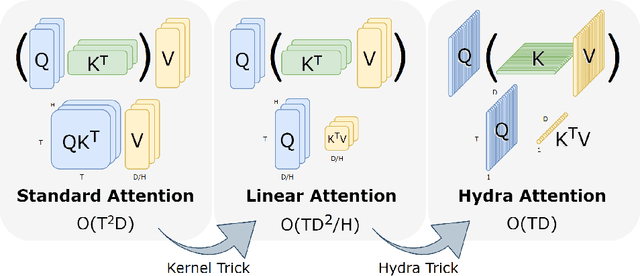

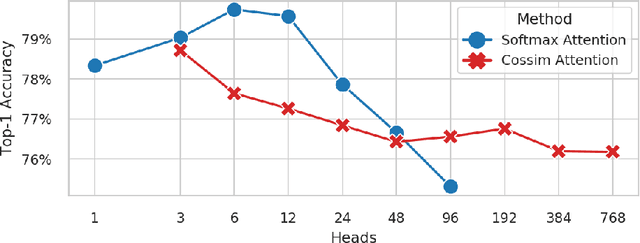

Abstract:While transformers have begun to dominate many tasks in vision, applying them to large images is still computationally difficult. A large reason for this is that self-attention scales quadratically with the number of tokens, which in turn, scales quadratically with the image size. On larger images (e.g., 1080p), over 60% of the total computation in the network is spent solely on creating and applying attention matrices. We take a step toward solving this issue by introducing Hydra Attention, an extremely efficient attention operation for Vision Transformers (ViTs). Paradoxically, this efficiency comes from taking multi-head attention to its extreme: by using as many attention heads as there are features, Hydra Attention is computationally linear in both tokens and features with no hidden constants, making it significantly faster than standard self-attention in an off-the-shelf ViT-B/16 by a factor of the token count. Moreover, Hydra Attention retains high accuracy on ImageNet and, in some cases, actually improves it.
Scalable Diverse Model Selection for Accessible Transfer Learning
Nov 12, 2021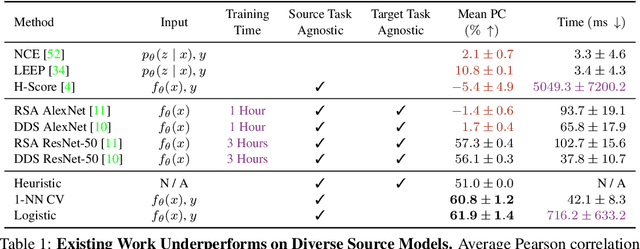
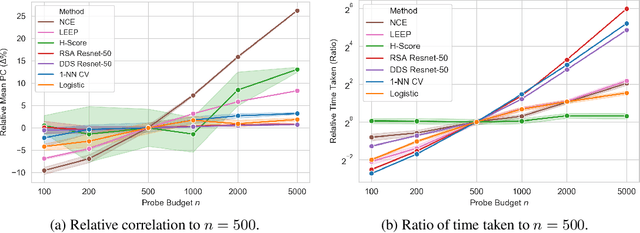

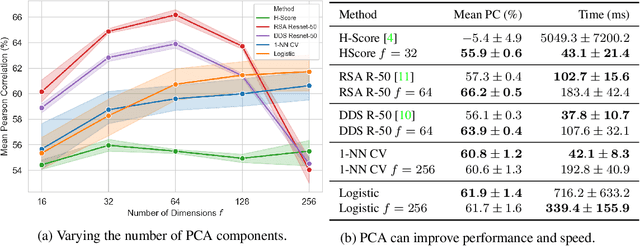
Abstract:With the preponderance of pretrained deep learning models available off-the-shelf from model banks today, finding the best weights to fine-tune to your use-case can be a daunting task. Several methods have recently been proposed to find good models for transfer learning, but they either don't scale well to large model banks or don't perform well on the diversity of off-the-shelf models. Ideally the question we want to answer is, "given some data and a source model, can you quickly predict the model's accuracy after fine-tuning?" In this paper, we formalize this setting as "Scalable Diverse Model Selection" and propose several benchmarks for evaluating on this task. We find that existing model selection and transferability estimation methods perform poorly here and analyze why this is the case. We then introduce simple techniques to improve the performance and speed of these algorithms. Finally, we iterate on existing methods to create PARC, which outperforms all other methods on diverse model selection. We have released the benchmarks and method code in hope to inspire future work in model selection for accessible transfer learning.
 Add to Chrome
Add to Chrome Add to Firefox
Add to Firefox Add to Edge
Add to Edge